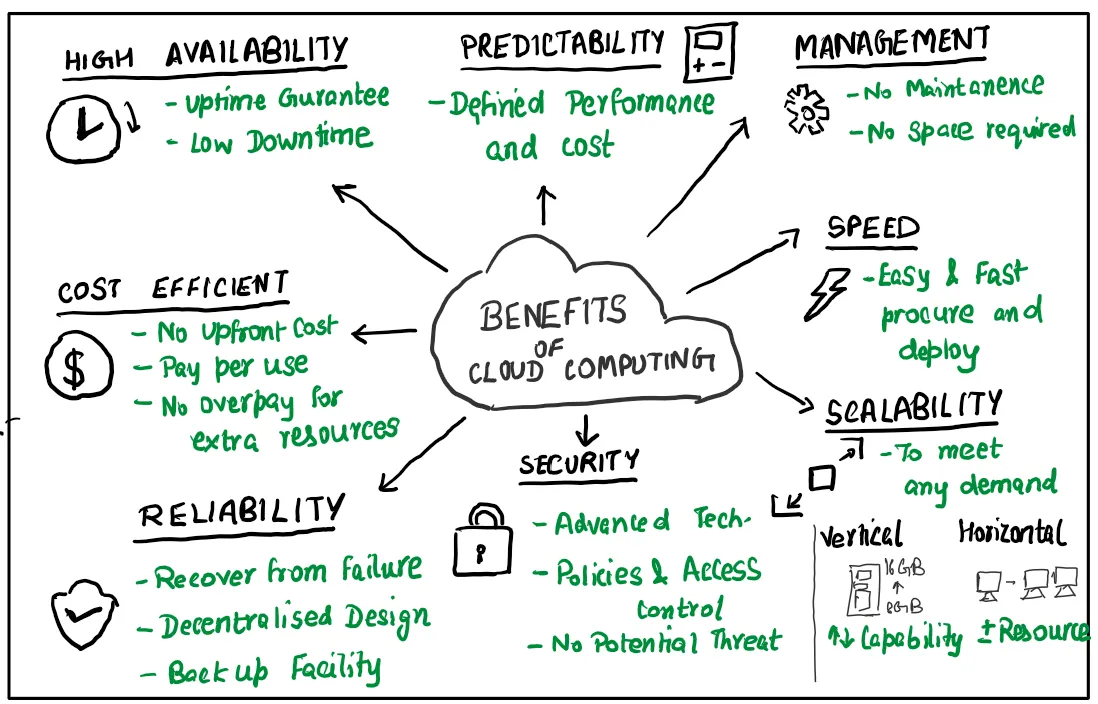Benefits of Cloud Computing

High Availability
When you’re deploying an application, a service, or any IT resources, it’s important the resources are available when needed, probably all the time, regardless of any disruptions or events that may occur.
CSPs generally tie services with Service level agreements which define uptime guarantees like 99% or 99.9% available etc.
Cost efficient
Cloud computing operates on a consumption-based model, that includes several advantages:
No upfront costs.
No need to purchase and manage costly infrastructure that users might not use to its fullest potential.
Ability to pay for resources when they’re used.
No overpay for resources that are no longer needed.
Reliability
It is the ability of a system to recover from failures and continue to function.
Being a decentralized design, it holds data backup and service mirrored at multiple redundant sites, to overcome disaster recovery and provide business continuity easier.
Scalability
Scalability refers to the ability to adjust resources to deliver the right amount of IT resources — for example, more or less computing power, storage, and network bandwidth — right when it is needed and from the right geographic location.
It generally comes in two varieties: vertical and horizontal.
Vertical scaling is focused on increasing or decreasing the capabilities of resources. With vertical scaling, if you were developing an app and you needed more processing power, you could vertically scale up to add more CPUs or RAM to the virtual machine
Horizontal scaling is adding or subtracting the number of resources. With horizontal scaling, if you suddenly experienced a steep jump in demand, your deployed resources could be increased(either automatically or manually).
Speed
Generally, cloud services are self-served and on demand, so even vast amounts of computing resources can be procured and deployed in minutes with simple steps.
Management
Cloud computing removes the need for many tasks like hardware setup and maintenance, software patching, and other management chores, so IT teams can spend more time focusing on business goals
Security
Generally, Cloud resources follow corporate standards and government regulatory requirements to support the security and compliance aspect.
With advanced technology available, cloud providers are typically well suited to handle different security threats efficiently, making your network more robust and secure.
By establishing a broad set of policies and access control, you can guard your data, apps, and infrastructure from vulnerable identity.
Predictability
It allows customers to forecast the expected cost and performance numbers before even deploying a solution that’s built around the cloud to compare it against the current setup and optimize it better according to their requirements.
Afterward, you can track your resource use in real-time, and monitor resources to ensure that you’re using them in the most efficient way.


